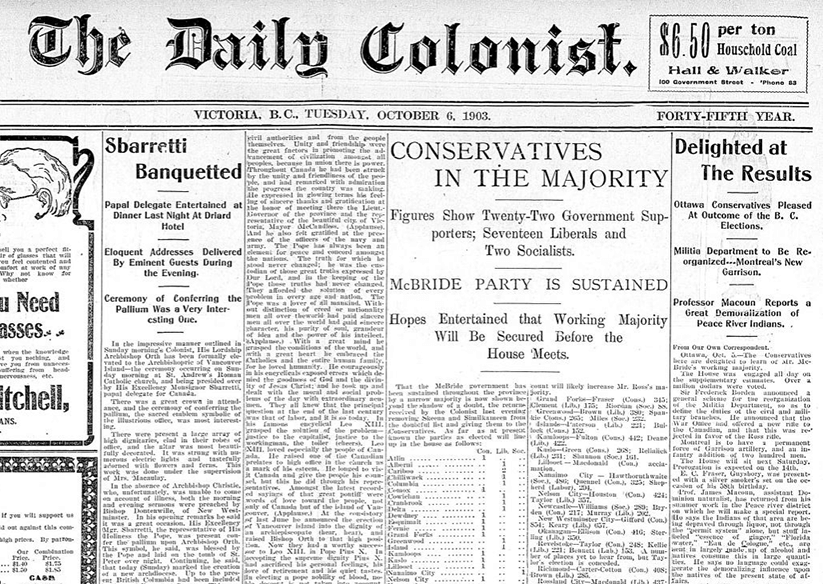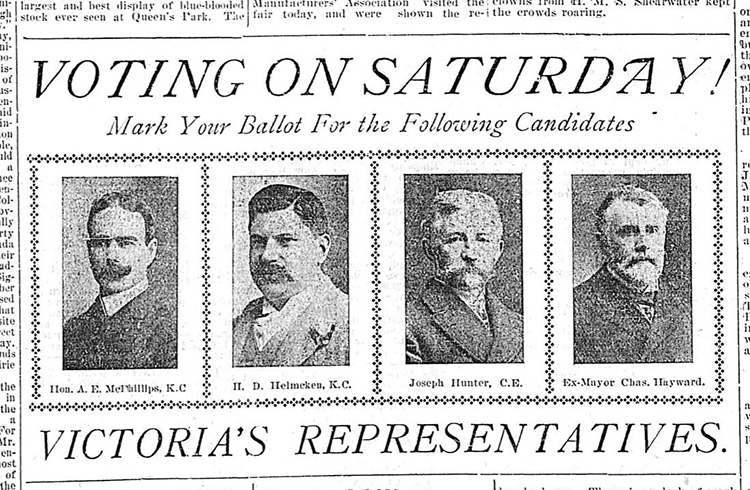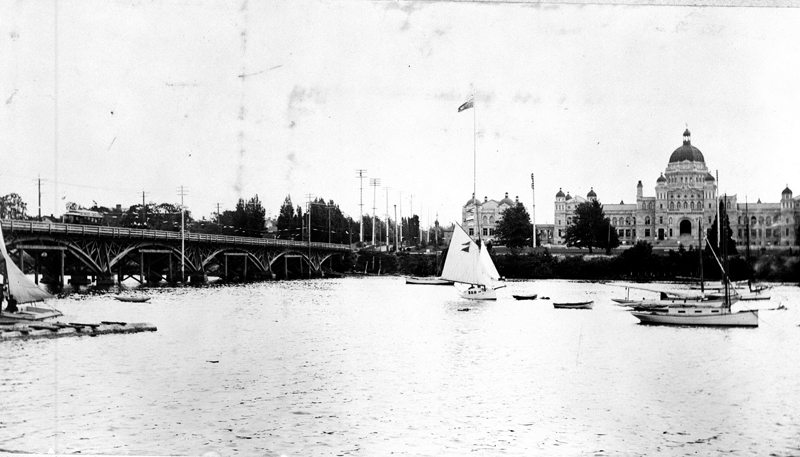The provincial Conservative and Liberal parties formally emerged at separate pre-election conventions in 1902. Prior to that time, MLAs had not aligned themselves with political parties, preferring to form alliances with each other based on personal relationships and interests rather than on policies or principles.
This ever-shifting arrangement became highly unpredictable and adversarial, leading ultimately to the inability to form a government. MLAs accepted the party system adopted in other parts of Canada in order to try and bring some stability to the provincial government.
The 1903 election included candidates from the Conservative, Liberal, Labour, and Socialist parties. The Conservative Party, led by Richard McBride, won a slim majority of 22 seats in a 42 seat Legislative Assembly, with the Liberals winning 17, Socialists 2, and Labour 1. McBride remained Premier until 1915.
The first coalition government in B.C. (which is a government of two or more political parties working together) was formed in 1942. This coalition between the Liberal and Conservative parties lasted through both the 1945 and 1949 provincial elections, but eventually ended in 1952.






